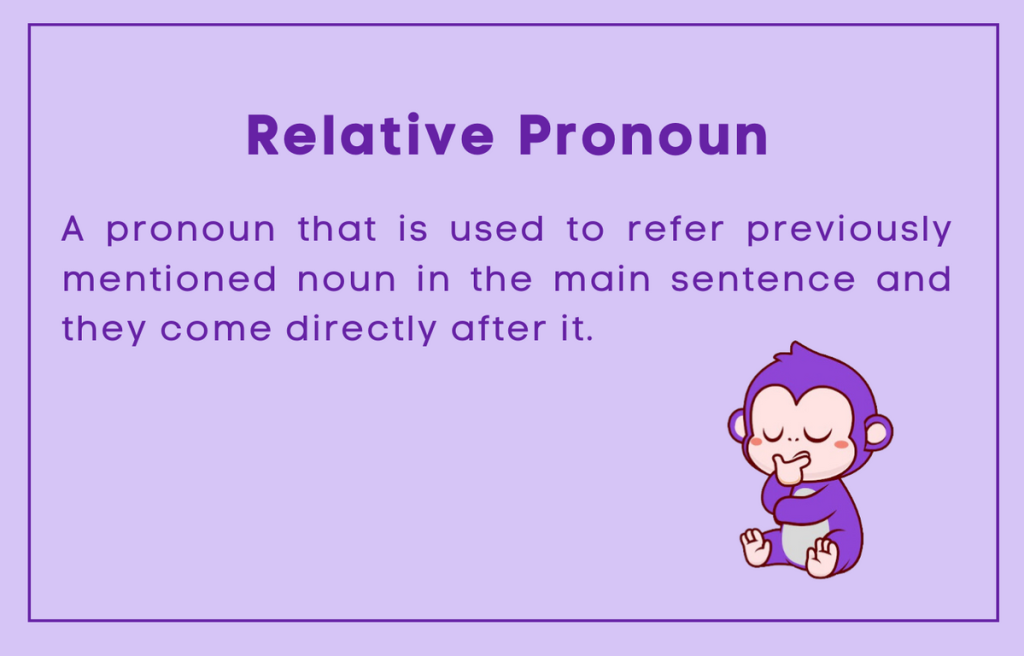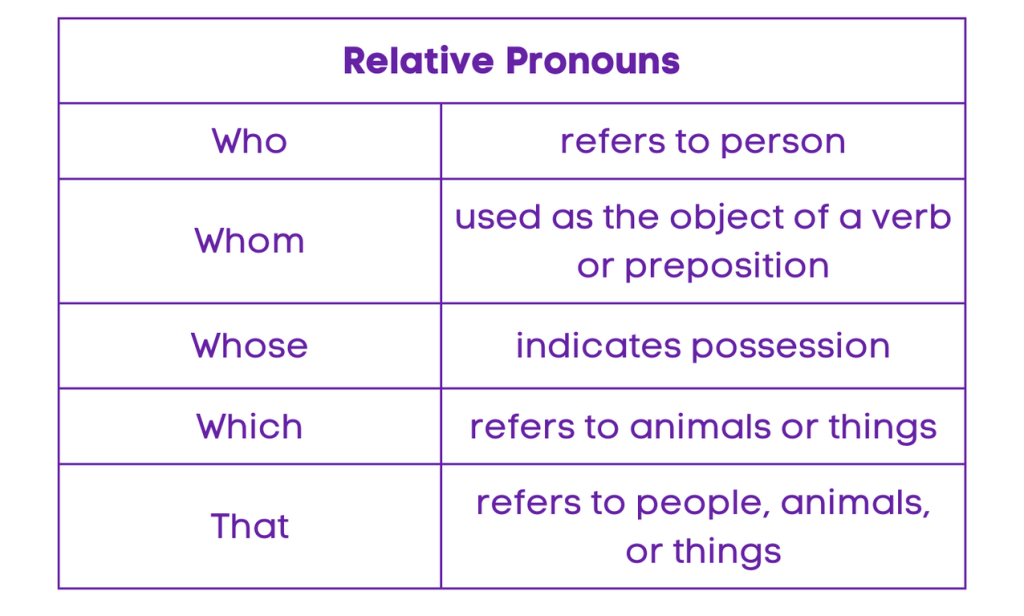What are Relative Pronouns? – Meaning and Examples
Introduction
Relative Pronouns
In the English language, relative pronouns play a crucial role in connecting clauses and providing additional information about a noun. They are used to introduce relative clauses, which describe or provide more details about the noun in the main clause. Let’s explore the different types of relative pronouns and their functions in sentences.
Analogy of Definition
What is a Relative Pronoun?
A relative pronoun is a type of pronoun that introduces a subordinate clause and connects it to the main clause. It serves as a link between the two clauses and refers back to a noun or pronoun in the main clause. Relative pronouns include “who,” “whom,” “whose,” “which,” and “that,” each serving a specific purpose in a sentence.

Examples
Examples of Relative Pronouns
1. The woman who lives next door is a doctor.
2. The book, which is on the table, belongs to me.
3. The car that I bought is red.
4. The student, whom the teacher praised, won the award.
5. The dog, whose tail is wagging, is friendly.
Quiz
Tips and Tricks
1. The Possessive Relative Pronoun
Tip: Use “whose” to indicate possession, similar to the possessive form of “who.”
Example: The girl whose bag was lost has found it.
2. Compound Relative Pronouns
Tip: Use “that” for essential clauses and “which” for non-essential clauses.
Example: The movie that we watched last night was amazing.
Example: The book, which is on the table, belongs to me.
3. That vs Which
Tip: Use “that” for essential information and “which” for non-essential information.
Example: The car that I bought is red.
Example: The book, which is on the table, belongs to me.
4. Who vs That
Tip: Use “who” when referring to people and “that” when referring to people, animals, or things.
Example: The person that helped me was kind.
5. Who vs Whom
Tip: Use “who” as the subject of a verb and “whom” as the object of a verb or preposition.
Example: The student whom the teacher praised is talented.
Real life application
Story: “The Adventures of Relative Pronouns”
In everyday life, relative pronouns are used to provide additional information and connect ideas in various contexts. Let’s explore some real-life scenarios where relative pronouns play a crucial role.
Scenario 1: The Family Reunion
During a family reunion, relatives shared stories about their experiences. They talked about the uncle who traveled the world and the aunt whose cooking was famous. The stories were filled with details that highlighted the importance of using relative pronouns to provide descriptive information.
Scenario 2: The Job Interview
In a job interview, candidates discussed their achievements and qualifications. They mentioned projects that showcased their skills and experiences which had a significant impact on their careers. The use of relative pronouns helped convey the relevance and significance of their accomplishments.
Scenario 3: The Travel Adventure
Travelers shared their travel experiences, describing the places where they explored and the people whom they met along the way. The stories were enriched by the use of relative pronouns, providing vivid details about their adventures.
FAQ's
Like? Share it with your friends







